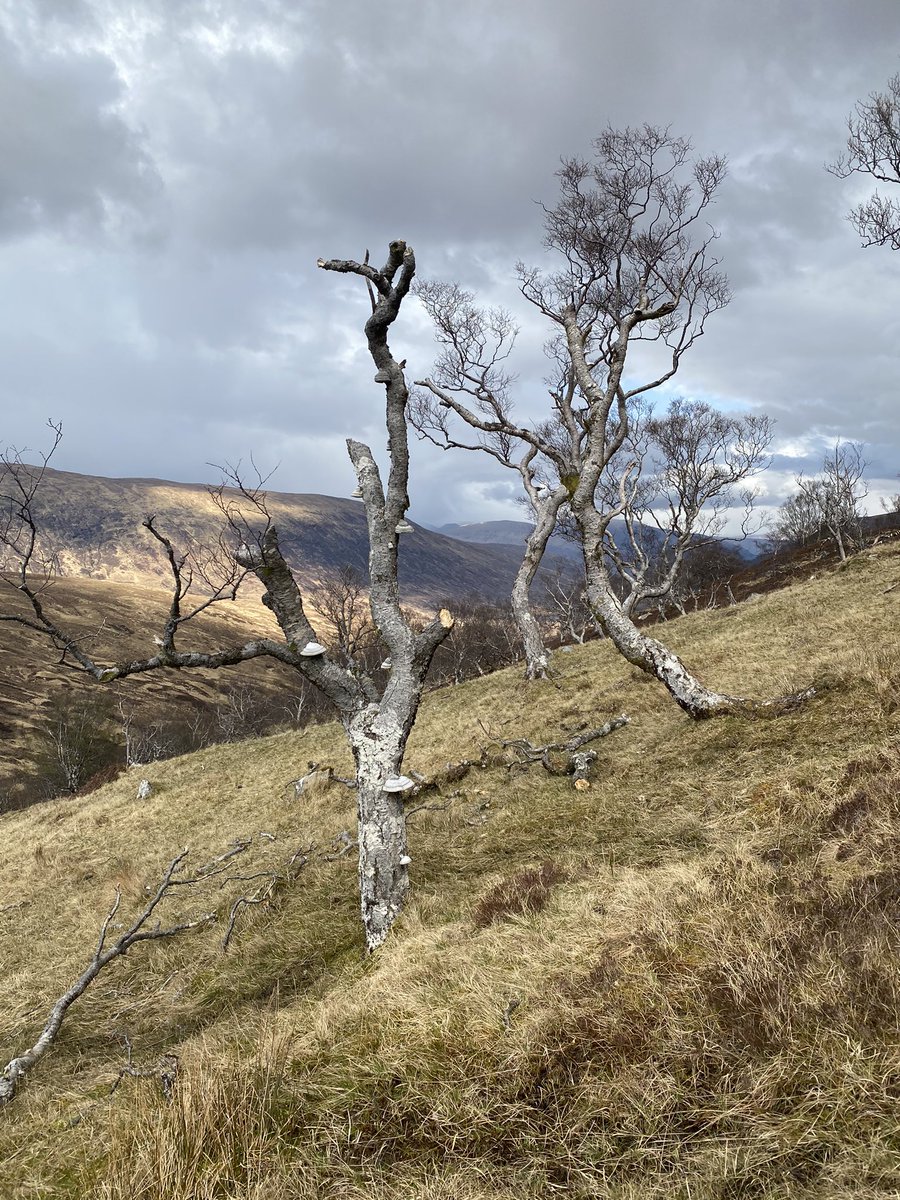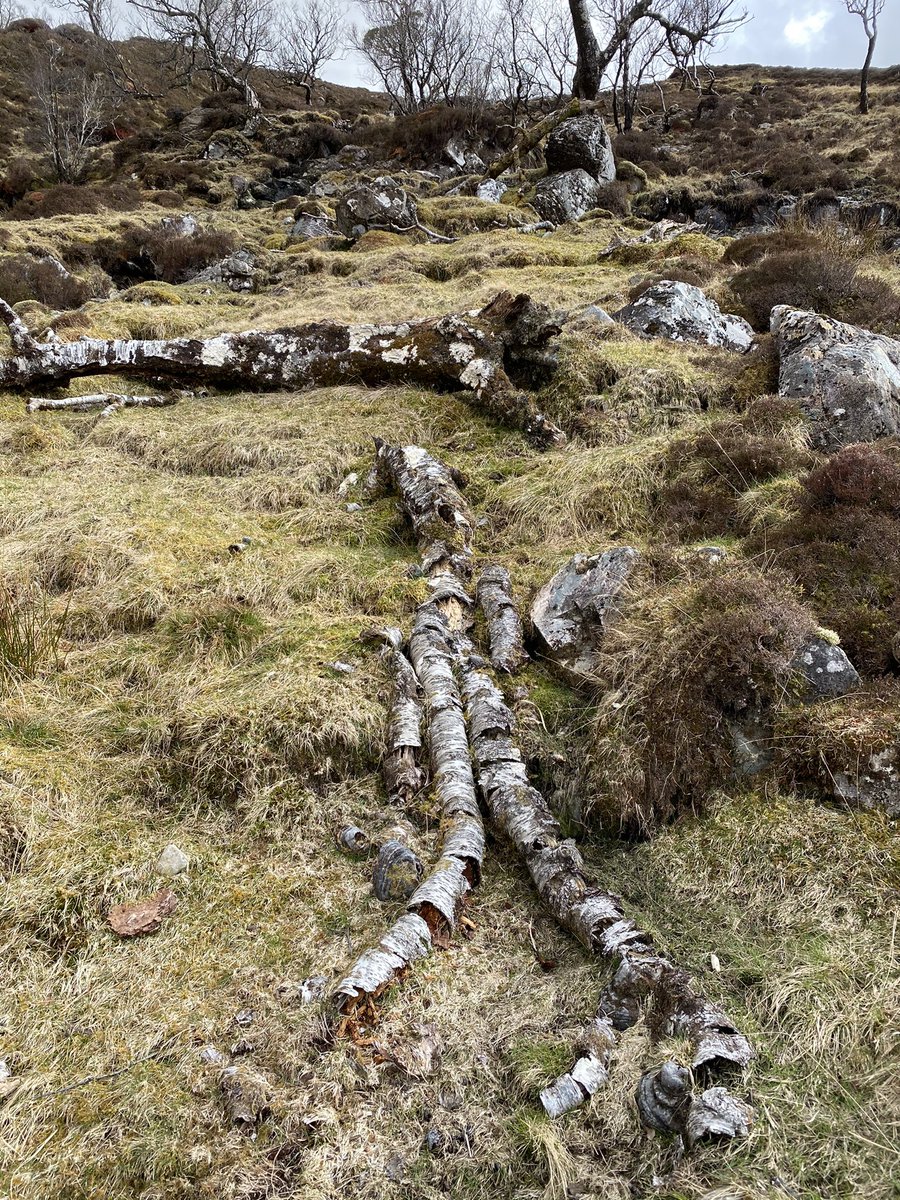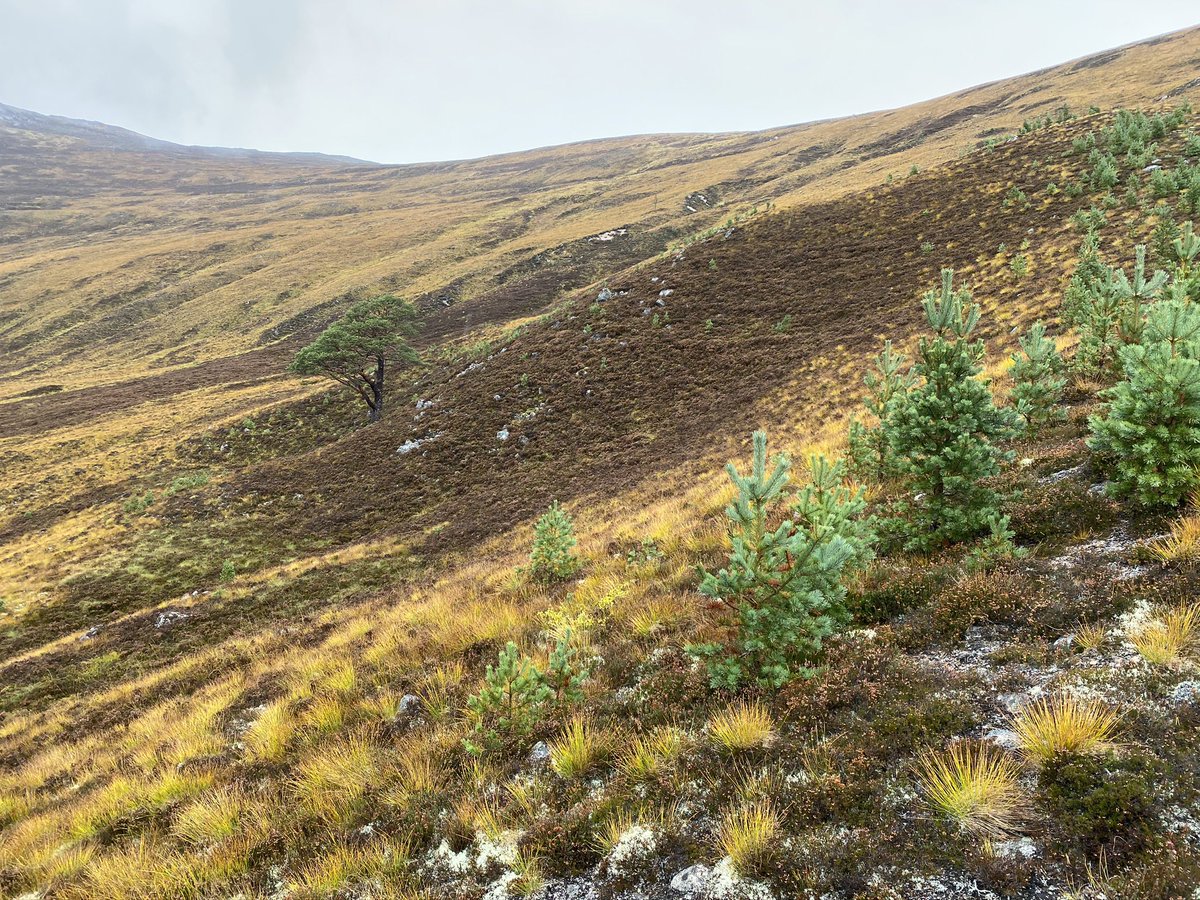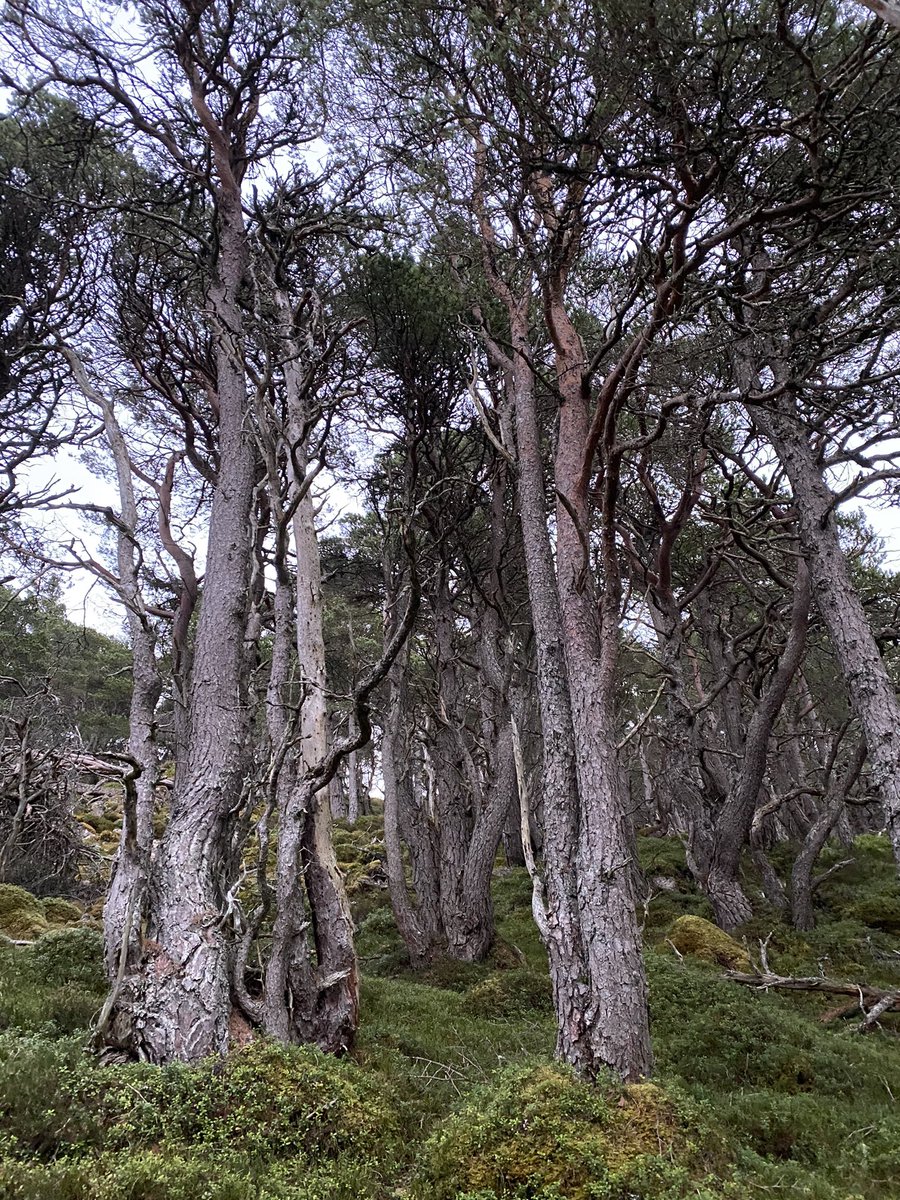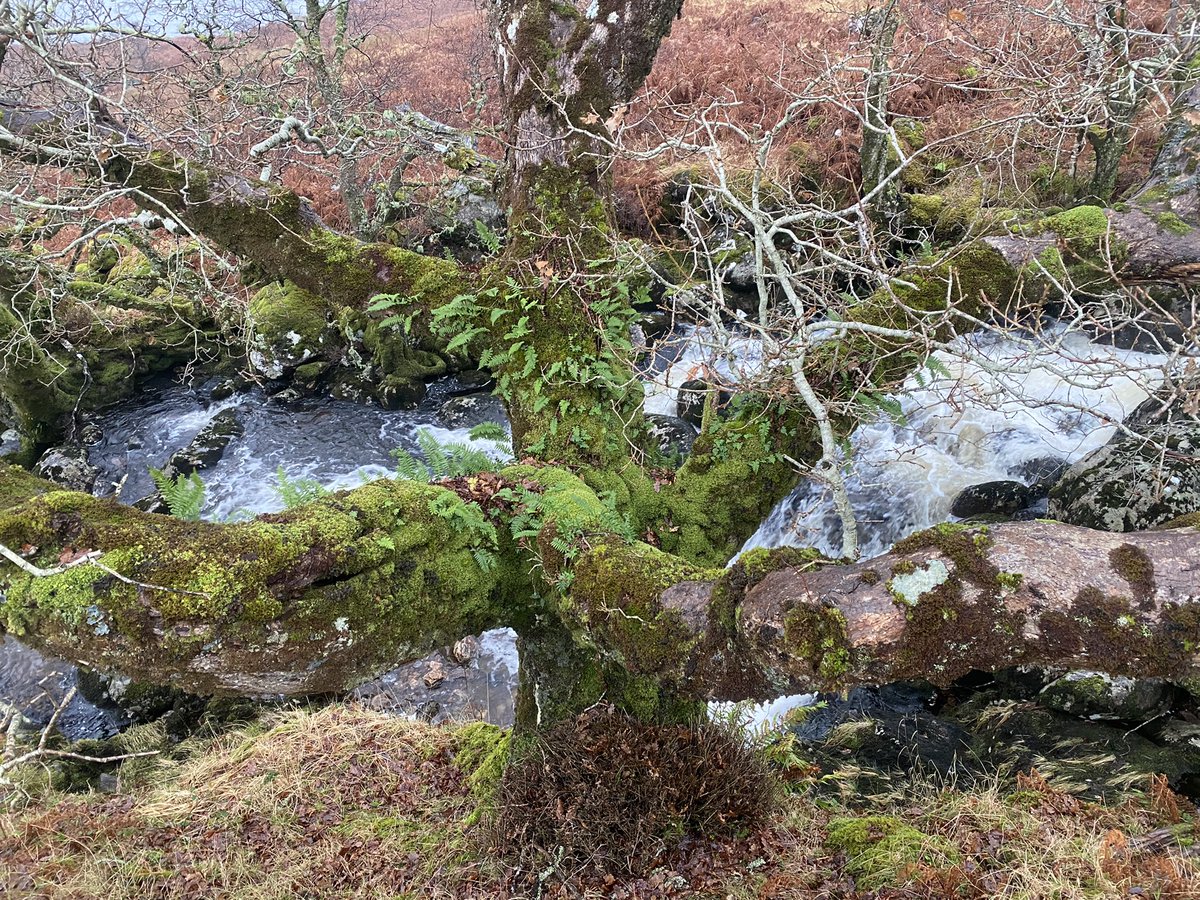across the Scottish Highlands, Ancient Woods are falling apart following centuries of heavy browsing pressure. this thread provides a case study, and tries to make sense of why this ecological and cultural crisis is still widely ignored #wildtrees 

our case study area is ~60km2 of open mountain and glen near Fort William. deer stalking is the main land use, and sheep are grazed in the southern glen (Glen Loy). no one lives here, and the area appears to be almost completely devoid of tree cover from above 

this wasn't the case just a few generations ago: in the 1870s there was over 200Ha of woodland (green blocks) along with thousands of scattered trees (green dots) 

this was a wild tree landscape (not planted) with 5 named woods:
🌳 Brian Choille, 'rough wood'
🌳 Cam Dhoire, 'the crooked thicket'
🌳 Coille an Ruighe Mhòir, 'wood of the big shieling'
🌳 Coille Meall Onfhaidh, 'wood of the stormy hill'
🌳 Fraoch Mòr, 'big heather'
🌳 Brian Choille, 'rough wood'
🌳 Cam Dhoire, 'the crooked thicket'
🌳 Coille an Ruighe Mhòir, 'wood of the big shieling'
🌳 Coille Meall Onfhaidh, 'wood of the stormy hill'
🌳 Fraoch Mòr, 'big heather'

fast forward to today and these woods have retreated by 80-90% (red = loss). why? each tree that died simply wasn't replaced, as every seedling that tried to grow up over the past 150 years has been eaten by sheep or deer 

despite this, there's a still a lot of wildlife left where wild trees survive - fungal networks attached to roots, lichens and bryophytes growing on bark, insects feeding on deadwood, birds nesting in the canopy etc. but all of this is doomed if things don't change fast 

something i've struggled to understand is why woods like this have been so ignored? i think part of the reason is prejudice - foresters perceived birch (often the dominant species) as a 'weed tree', ecologists have largely ignored woods with low canopy cover until recently 

additionally, old maps were difficult to access in the past, so few people realised that these woods were so ancient (some poss wooded for 1000s of yrs), & land access rights were only formalised in 2005. this has set stage for a new generation to 'rediscover' these places 

of course the back drop to this is that our woodland culture has been largely erased. the people who lived in this landscape and named and worked these woods were cleared from it. this in turn has allowed centuries of decline to go unnoticed 

a problem is that the narrative for restoring landscapes in the Highlands is heavily focused on tree planting - an artefact of past conservationists & foresters largely ignoring wild trees and misunderstanding potential of natural regeneration (wild trees seeding themselves) 

this can manifest in unhelpful ways - wild trees being engulfed within plantations, or Ancient Woods being left to fall apart while deer fences are created around new plantations.
even the idea we should fence areas off to deal with a landscape scale problem is unhelpful
even the idea we should fence areas off to deal with a landscape scale problem is unhelpful

what do we do? first we need to recognise that these places exist and that many are in a critical stage of decline. then we need to prioritise them and manage accordingly. often this will require significant reductions in landscape scale browsing pressure so young trees can grow 

please give this crisis the attention that it deserves @MairiGougeon @lornaslater @DAJCameron, these woods are irreplaceable and cannot be allowed to deteriorate further. perpetuating the status quo is not a neutral option - it will rob future generations of these places 





• • •
Missing some Tweet in this thread? You can try to
force a refresh







